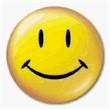☮ Peace Sign or Peace Symbol ☮.
 This symbol (☮) was originally designed for the British nuclear disarmament movement.
It was designed and completed February 21, 1958 by Gerald Holtom,
a professional designer and artist in Britain
for the April 4 march planned by the Direct Action Committee Against Nuclear War
(DAC) from Trafalgar Square, London to the Atomic Weapons Research Establishment
at AldermastonChristan in England[3].
The symbol was later adopted by the Campaign for Nuclear Disarmament (CND),
and subsequently became an international emblem for the 1960s anti-war movement
and the counterculture of the time.
This symbol (☮) was originally designed for the British nuclear disarmament movement.
It was designed and completed February 21, 1958 by Gerald Holtom,
a professional designer and artist in Britain
for the April 4 march planned by the Direct Action Committee Against Nuclear War
(DAC) from Trafalgar Square, London to the Atomic Weapons Research Establishment
at AldermastonChristan in England[3].
The symbol was later adopted by the Campaign for Nuclear Disarmament (CND),
and subsequently became an international emblem for the 1960s anti-war movement
and the counterculture of the time.

|

|
Holtom later wrote to Hugh Brock, editor of Peace News, explaining the genesis of his idea in greater depth: "I was in despair. Deep despair. I drew myself: the representative of an individual in despair, with hands palm outstretched outwards and downwards in the manner of Goya's peasant before the firing squad. I formalised the drawing into a line and put a circle round it."
U.S. Army PoW Richard H. Springman discusses his peace sign necklace with his North Vietnamese Army captors during the Vietnam WarThe peace sign flag first became known in the United States in 1958 when Albert Bigelow, a pacifist protester, sailed his small boat outfitted with the CND banner into the vicinity of a nuclear test. The peace sign button was imported into the United States in 1960 by Philip Altbach, a freshman at the University of Chicago, who traveled to England to meet with British peace groups as a delegate from the Student Peace Union (SPU). Altbach purchased a bag of the "chickentrack" buttons while he was in England, and brought them back to Chicago, where he convinced SPU to reprint the button and adopt it as its symbol. Over the next four years, SPU reproduced and sold thousands of the buttons on college campuses. By the late 1960s, the peace sign had become an international symbol adopted by anti-war protestors of the Baby Boomer generation.
In Unicode, the peace sign is U+262E: ☮, and can thus be generated in HTML by typing ☮ or ☮. However, browsers may not have a font that can display it.
The original drawing of the CND is housed in the Peace Museum, U.K. in Bradford, England, where a replica is on public display.
Source wikipedia
The Hand Gesture Peace Sign
 THE HAND-GESTURE PEACE SIGN
The Hand Gesture Peace Sign
is thought to have begun in europe during world war II
when a V for victory - and not to be confused with the
catholic gesture of benediction - was painted on walls
as a symbol of freedom from occupying forces.
the sign was widely used by peace movements in the
1960s and 1970s as a symbol of victory for peace and truth.
THE HAND-GESTURE PEACE SIGN
The Hand Gesture Peace Sign
is thought to have begun in europe during world war II
when a V for victory - and not to be confused with the
catholic gesture of benediction - was painted on walls
as a symbol of freedom from occupying forces.
the sign was widely used by peace movements in the
1960s and 1970s as a symbol of victory for peace and truth.
History of the Smiley Face
 Harvey Ball, co-owner of an advertising and public relations firm in Worcester, Massachusetts designed the Smiley Face in 1964 to help ease the acrimonious aftermath following the merger of two insurance companies.
Harvey Ball, co-owner of an advertising and public relations firm in Worcester, Massachusetts designed the Smiley Face in 1964 to help ease the acrimonious aftermath following the merger of two insurance companies.
In the early 60s State Mutual Life Assurance of Worcester, MA initiated a merger that had bad effects on company morale. In 1964, State Mutual cooked up a “friendship campaign” to get employees to smile whenever they answered the phone, paid a claim, or typed a report. The company turned to Harvey Ball for graphic support. Ball reported that he spent about 10 minutes designing the smiley face, and he was paid $45 for it. (Wow $45 for 10 minutes is $270/hour! not bad for when the minimun wage was around $1.65/hr)
This was the only profit that Ball ever made from his most famous creation. Neither Ball or the insurance company trademarked or copyrighted the smiley face. In the early 1970s, the smiley face image became a symbol for an entire generation of Americans, emerging as one of the most well-known images in the country.
Later in life, Harvey said, "Never in the history of mankind or art has any single piece of art gotten such widespread favor, pleasure, enjoyment, and nothing has ever been so simply done and so easily understood in art."
By 1970, Murray and Bernard Spain, brothers who owned a card shop in Philadelphia, were affixing the yellow grin to everything from key chains to cookie jars along with "Have a happy day."